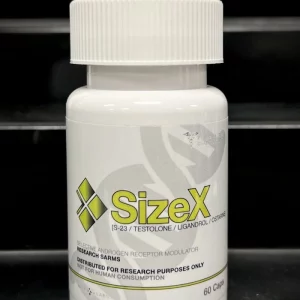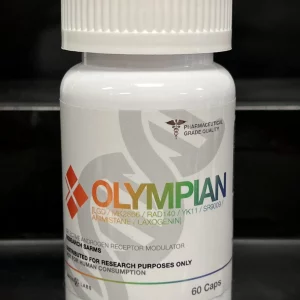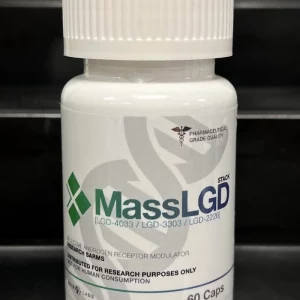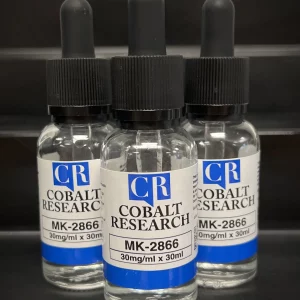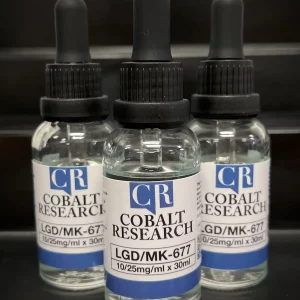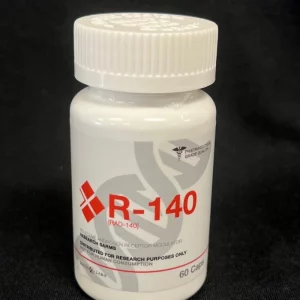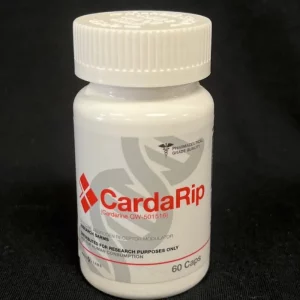Rad-150 (TLB-150) is a next-generation selective androgen receptor modulator (SARM) structurally related to RAD-140 (Testolone). It is engineered for higher metabolic stability and longer half-life, making it a compound of strong interest in research on muscle growth, recovery, and body composition.
Product Details
-
Compound: Rad-150 (TLB-150)
-
Class: SARM (selective androgen receptor modulator)
-
Form: Liquid
-
Concentration: 20mg/ml
-
Volume: 30ml vial
-
Application: Research and laboratory studies
Pharmacological Insights
-
Androgen receptor affinity: Comparable to RAD-140, but with enhanced esterification, resulting in extended metabolic half-life (estimated 48–60 hours).
-
Anabolic potential: Increases lean muscle hypertrophy, nitrogen retention, and power output in research subjects.
-
Stability: More resistant to enzymatic breakdown than earlier SARMs, offering longer activity between doses.
-
Testosterone suppression: Like other SARMs, Rad-150 suppresses endogenous hormone production in dose-dependent models.
-
Cycle length: Research often spans 8–12 weeks, with dosing structured to evaluate muscle gain and fat loss.
Documented Research Applications
-
Muscle Growth and Strength
-
Increased protein synthesis observed in androgen-responsive tissue.
-
Supports faster hypertrophy compared to placebo models.
-
-
Body Fat Reduction
-
Promotes leaner body composition with measurable decreases in fat mass.
-
Synergistic effects when combined with calorie restriction or endurance training.
-
-
Bone Density and Recovery
-
Androgen receptor stimulation contributes to bone strength in preclinical studies.
-
Faster recovery after musculoskeletal stress.
-
-
Comparative SARM Analysis
-
Rad-150 shows improved duration of effect compared to RAD-140, reducing frequency of administration.
-
Rad-150 FAQs (Aligned with Search Queries)
1. What is Rad-150?
Rad-150, also called TLB-150, is an esterified form of RAD-140. It is studied as a selective androgen receptor modulator (SARM) with anabolic properties and extended half-life.
2. How does Rad-150 differ from RAD-140?
Rad-150 carries an ester modification, giving it a half-life of 48–60 hours, compared to RAD-140’s ~24 hours. This provides longer activity with fewer administrations.
3. What does Rad-150 do in research?
Rad-150 increases lean muscle, reduces fat mass, and enhances bone density markers, according to preclinical studies.
4. What is the dosage of Rad-150 Liquid?
This vial contains 20mg/ml in a 30ml solution. Research cycles often range from 10–30mg per day in liquid administration studies.
5. How to take Rad-150 liquid in research models?
Rad-150 liquid is administered orally in measured milliliters. At 20mg/ml, 0.5ml delivers 10mg, while 1ml delivers 20mg.
6. What is a Rad-150 cycle?
Research cycles typically last 8–12 weeks, with dosing adjusted to evaluate strength gains, fat reduction, and recovery.
7. How fast does Rad-150 kick in?
Performance outcomes are often noted within 2–3 weeks, with lean mass improvements becoming more evident over longer cycles.
8. Does Rad-150 require PCT?
Like RAD-140, Rad-150 suppresses testosterone. Post-cycle therapy (PCT) protocols are studied to normalize natural hormone levels after research cycles.
9. What is the half-life of Rad-150?
Rad-150’s ester modification gives it an extended 48–60 hour half-life, reducing dosing frequency compared to RAD-140.
10. Is Rad-150 a steroid?
No. Rad-150 is a non-steroidal SARM. It binds androgen receptors selectively without being a testosterone derivative.
11. What are the benefits of Rad-150 in research?
The main benefits include:
-
Muscle hypertrophy
-
Fat mass reduction
-
Longer active duration
-
Improved recovery rates
-
Bone density support
12. What are the possible side effects of Rad-150?
Studies show suppression of natural testosterone, potential lipid alterations, and androgenic side effects at higher doses.
13. How is Rad-150 compared to other SARMs?
Rad-150 is stronger than Ostarine or LGD-4033, and longer-lasting than RAD-140, making it one of the more potent SARMs under investigation.
14. How many ml of Rad-150 equal a typical dose?
At 20mg/ml, a 20mg dose requires 1ml. Researchers calculate dosing in precise milliliters for consistency.
15. Does rad 150 increase testosterone?
Yes, it does increase testosterone.




